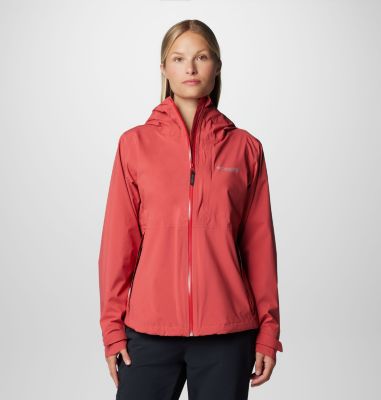Switzerland Scenic Trains: Discover the Vintage Schynige Platte Railway 31 Oct 2024 9:38 AM (2 months ago)
Are you looking for unique scenic trains in Switzerland? Then, discover the Schynige Platte railway, a hidden gem in Switzerland.
This post may contain affiliate links. So, if you make a purchase I get a small commission at no extra cost to you.
Switzerland is definitely not short of scenic train routes, and the vintage train ride to Schynige Platte in the Bernese Oberland is a memorable experience. Get ready to board a cute cogwheel train and reach one of the most breathtaking mountain sceneries in the Swiss Alps.
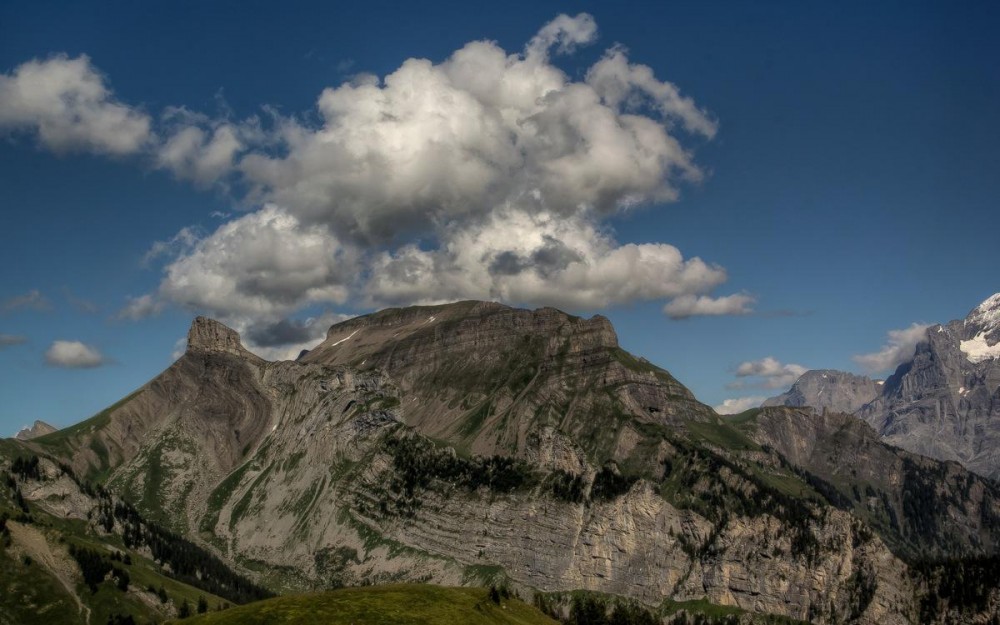
Schynige Platte: How to Plan Your Trip
Getting there: The easiest way to get to Schynige Platte is from Interlaken. The scenic train travels from/to Wilderswil, a 5-minute train ride from Interlaken. Wilderswil is also well connected with other lovely towns in the Jungfrau region, like Wengen, Lauterbrunnen, and Grindelwald.
Best time to go: The Schynige Platte Railway is open from mid-June to mid-October. If you visit Switzerland in summer, you can take the Schynige Platte excursion in addition to the train ride to Jungfraujoch Top of Europe.
Fares: There are many ticket options, including special offers for children. In case you plan to spend a few days to explore the region, a good option is the Jungfraubahn Travel Pass. You get three consecutive days of unlimited travel on a vaste railway network. Beware, however, that the ride from Eigergletscher to Jungraujoch Top of Europe is not included, but with the pass you can buy it at a 50% discount.
Where to stay: To ride the Schynige Platte train and visit this beautiful area, the best place to stay is Interlaken. From there, you can easily explore the region by train, boat, cable car, and bus.
- Switzerland is pricey. Therefore, if you’re looking for a budget accommodation, the Adventure Hostel is an excellent solution. You can book a double room at reasonable prices, and stay within walking distance from Interlaken Ost train station.
- Hotel Post Hardermannli features a quintessential Swiss architecture. It has a perfect location, in the center of the town, and features moderately-priced rooms.
- Looking for a more exclusive accommodation in Interlaken? Have a look at the 4-star Hey Hotel. It features modern a stylish decor and the location is excellent.
Schynige Platte: One of the Most Panoramic train Routes in Switzerland
Leaving Wilderswil, a small town near Interlaken, the train slowly climbs steep tracks across beautiful forests, green fields dotted with flowers in Summer, and glimpses of the surrounding peaks. It takes many twists and turns and 52 minutes to ride 7.26 km (4.51 mi) until it reaches its destination: Schynige Platte, the plateau offering magnificent views of the Eiger, Mönch, and Jungfrau as well as over Lake Brienz.
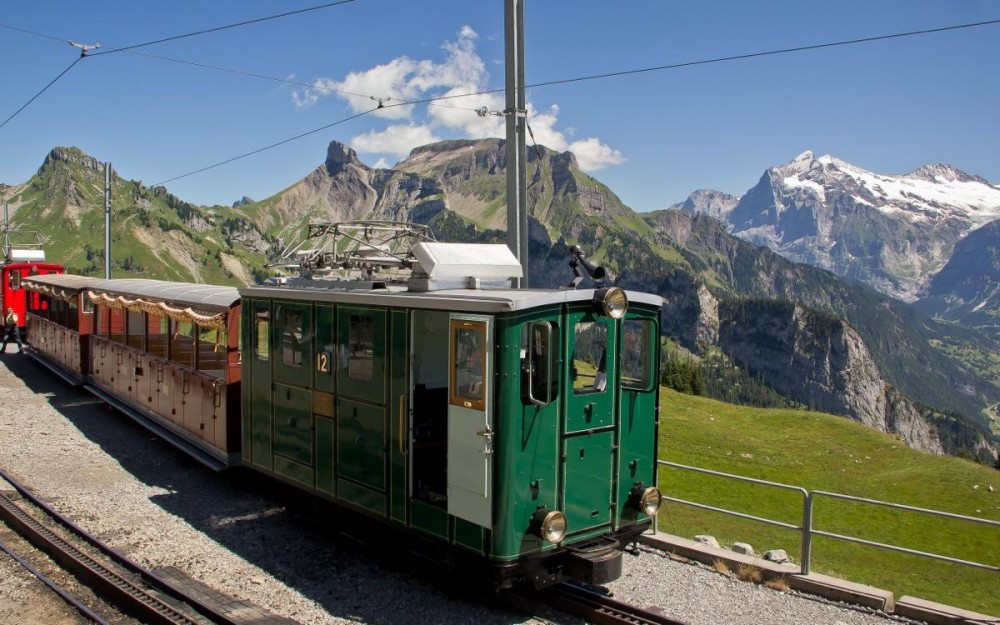
The slow journey to Schynige Platte along the cog railway is pure bliss. As I sat in the vintage open carriages, lulled by the rhythm of the climbing train, my thoughts quickly flew away to an imaginary world mixing memories from the past and present emotions.
I felt like I could experience the journey with all my senses: not only the stunning views but also the smell of the forest, the sound of the wind (and of the climbing train, of course), the taste of fresh air, and so much beauty.
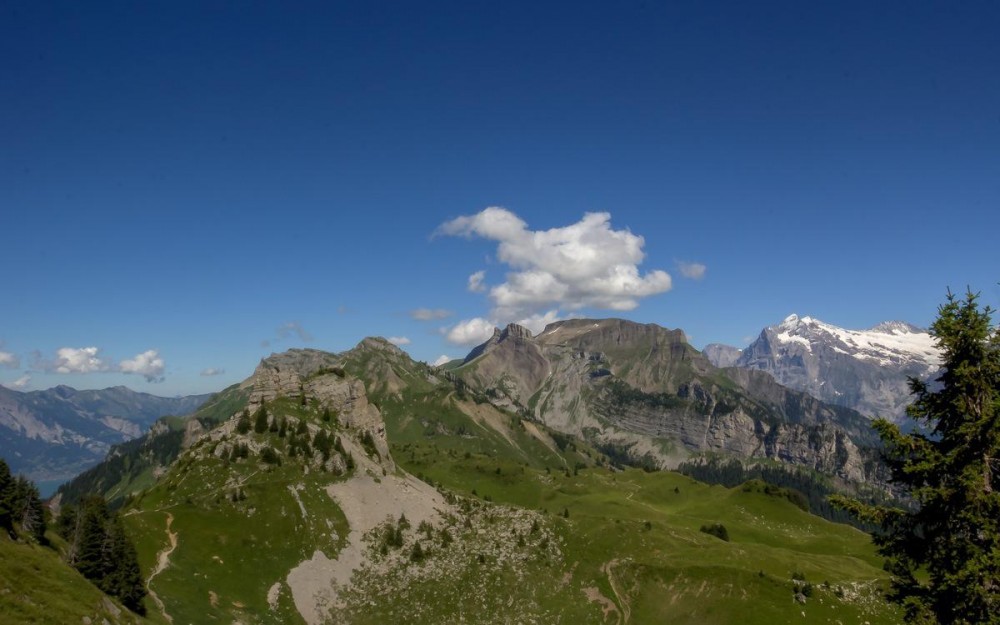
As soon as I stepped out of the train, I was overwhelmed by the stunning mountain scenery: green meadows, rocks carved by erosion, and, a little farther, glittering white glaciers. It was as if an imaginary board welcomed me, telling me, ‘ Welcome to Paradise.’
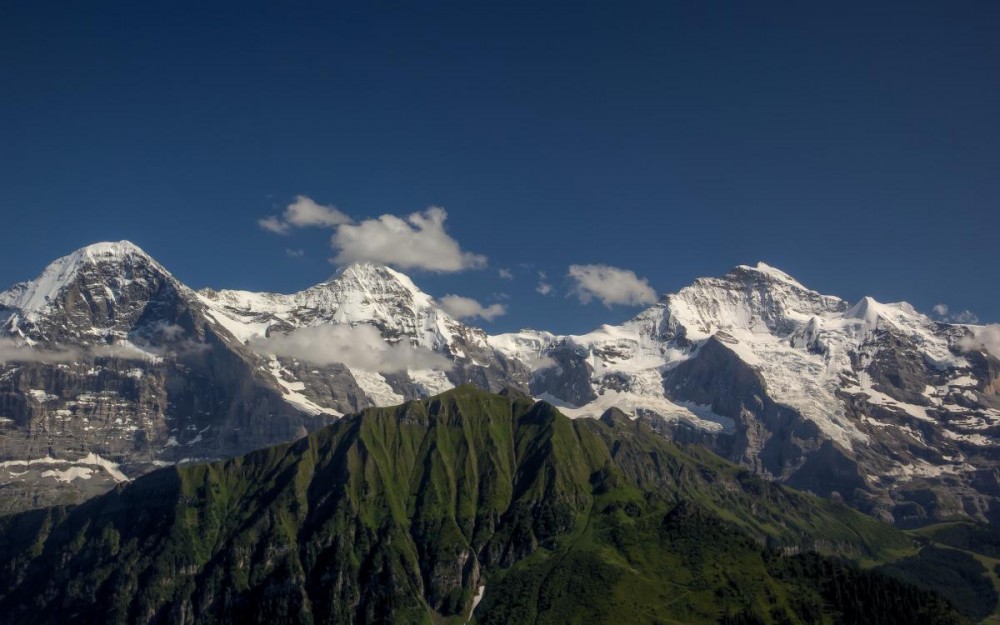
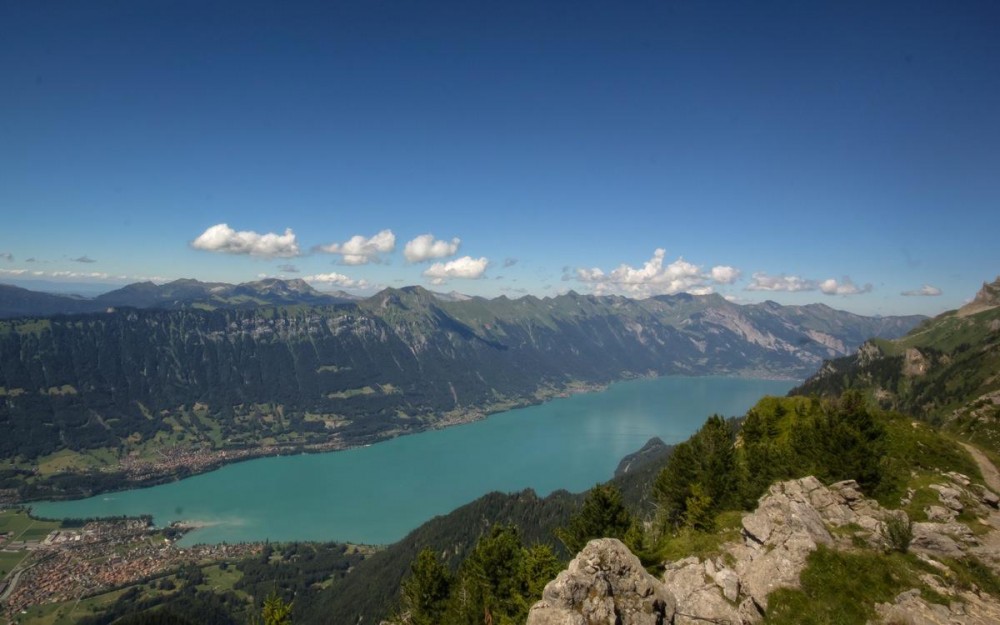
Schynige Platte is the starting point for several hiking trails of various lengths and difficulty. Although I didn’t have enough time for a long walk, I headed towards one of the shorter paths to enjoy a little physical exercise and admire more of the stunning landscape surrounding me.


On the way back, I stopped to have a look at the alpine garden, which collects over 600 species, before heading to the panoramic restaurant for one of my favorite typical Swiss dishes: Rösti (for those who have never tasted it, it’s made of fried grated potatoes often including bacon and in some cases with a fried egg on top), washed down with a glass of cold beer.
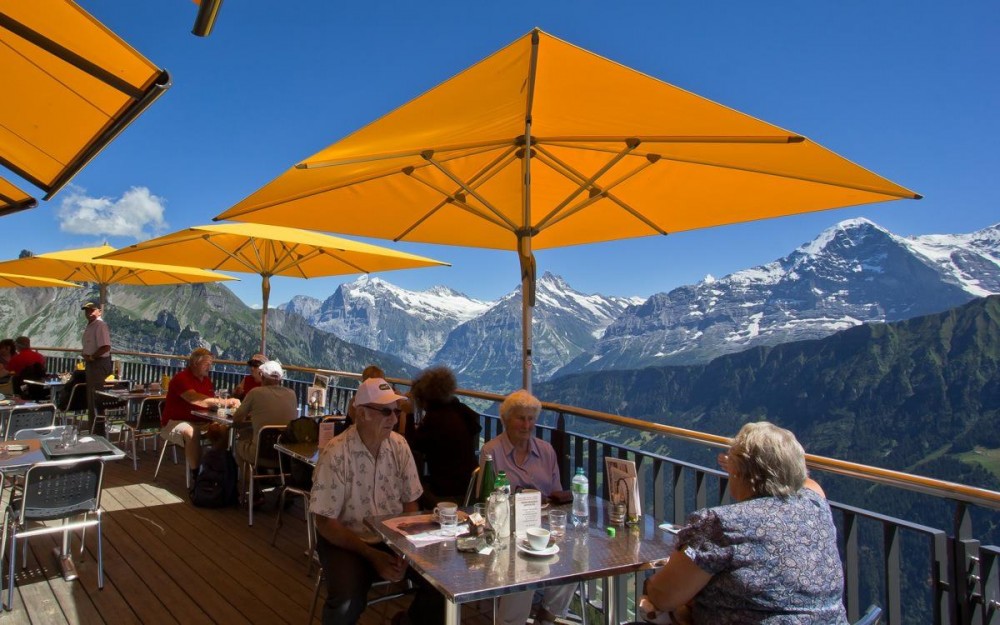
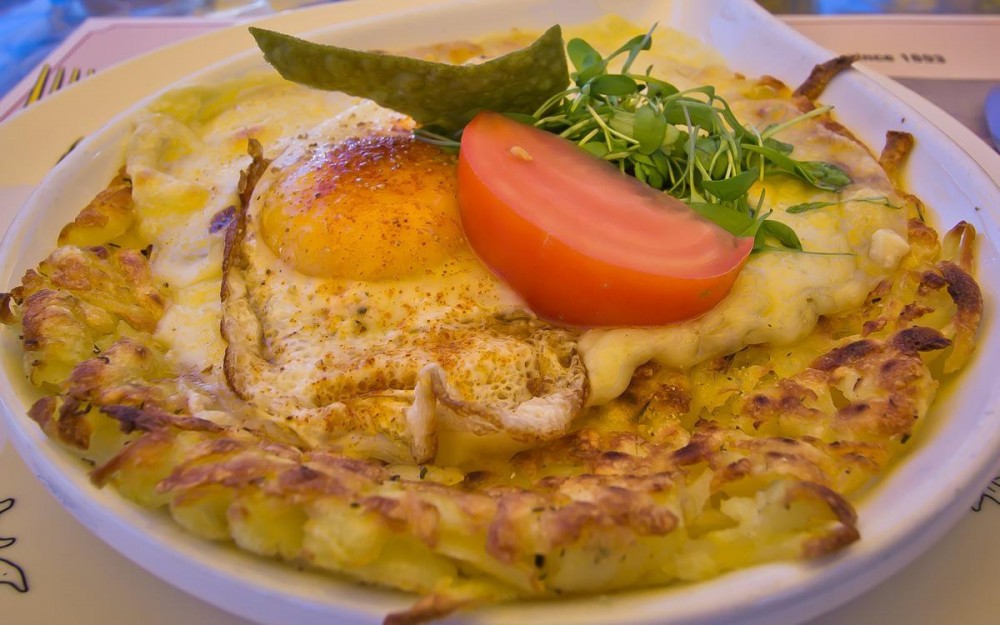
Whether you’re a mountain lover or passionate about scenic train routes, the Schynige Platte vintage train is a must-do in Switzerland. Aside from Jungfrau Top of Europe, offering magnificent views of the glaciers, and the Gornergrat in Zermatt, overlooking the Matterhorn and its perfect shape like a pyramid, Schynige Platte has the advantage of being lesser known but beautiful.
Furthermore, the ride to Schynige Platte is suitable to all. Families with children, couples looking for a romantic gateway, elderly keen to spend a day out in nature without having to worry too much about the altitude or hikers keen to walk along lovely and lesser crowded trails.
Which are the most scenic train journeys you have experienced?
_______
Note: I was kindly invited by the Jungfrau Mountain Railways to experience this incredible train journey. As always, opinions are mine and mine only.
Pin for later!
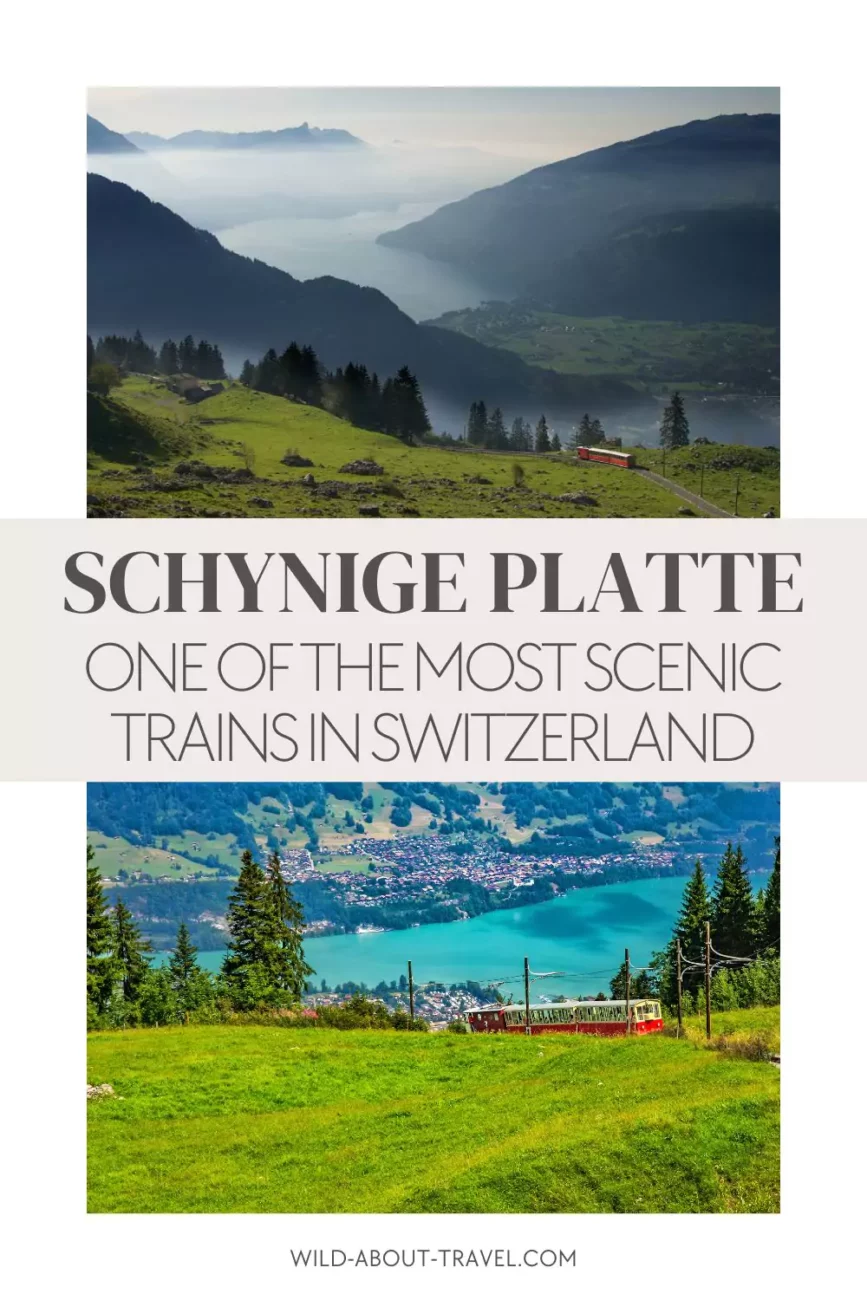
This post Switzerland Scenic Trains: Discover the Vintage Schynige Platte Railway was first published at
Wild About Travel.
Day Hike Packing List: Must-Have Hiking Gear 7 Sep 2024 8:08 AM (4 months ago)
Why is a day hike packing list essential? Over the years, I learned that while a day hike may seem nothing to think much about, especially if it’s an easy one, you always have to be prepared. Here’s my list of essential hiking gear.
This article contains affiliate links to products I use during my hikes or carefully selected. If you buy any of them, I will get a small commission at no extra cost to you. As an Amazon Associate, I earn commission from qualifying purchases.
I’ve been hiking alone for a long time, and I had my share of one-day walks, some quite long. I learned a few valuable lessons, like never underestimating how quickly the weather can change and being prepared (as much as possible) for the unexpected. That’s how I found out that there’s must-have hiking gear that I should always have with me, no matter where I go and for how long. I also created a day hike checklist, which helps me not to forget essential items.
Day hike packing list and must-have hiking gear
Backpack
I assume that anyone going on a day hike will have a backpack. However, choosing the right one is crucial so you are comfortable and the burden doesn’t load too much on your back. These are the most significant features of a day hike backpack:
- 22-25 liters: enough to store your essential gear
- Breathable air mesh back panel: you don’t want your daypack to stick on your back, do you?
- Load-bearing hip belt to keep your backpack stable and reduce the weight on your back.
- Integrated rain cover, so that you don’t have to buy a separate one.
I’m a big fan of Osprey backpacks and have a few in different sizes. They’re pricey but sturdy, and I particularly like that they have backpacks specially designed for women.
I love my Osprey Sirrus 24L, which is perfect for a day hike. As for men, the Osprey Stratos 24L is an excellent backpack for day hikes, similar to the Sirrus.
Hiking Shoes
Technically speaking, you don’t pack your hiking shoes but… This is the most essential hiking gear since hiking shoes have a huge impact on comfort AND safety. Therefore, if you have a limited budget, you can buy cheaper versions of any hiking essentials, but shoes and backpacks are the ones for which you should spend more.
What are the key features of hiking shoes?
- Comfort: this is very personal because everyone’s feet are shaped differently. You can buy hiking shoes online, but first, go to a store and try them on.
- Waterproof: few things are more unpleasant than wet feet. Even if the sun shines, you might have to cross a stream.
- Proper dented soles to walk on rough terrain.
I’m delighted with my La Sportiva hiking boots. High and supportive of my ankles, they were my faithful companions when hiking Los Glaciares in Patagonia, the Dolomites, and many other places.
Additionally, I recently bought a pair of mid-height La Sportiva hiking shoes, which are perfect for day hikes. Although I miss feeling my ankles steady, these shoes are lighter and more practical when I go on trails that I already know are not particularly challenging. They’re also convenient for a short break because I can wear them with jeans and don’t need to bring a second pair of shoes. I use mine quite often, and I bet you would, too.
Spare clothes (especially when it’s warm)
How you dress for your hike depends on the season, the location, and the weather. However, whatever your outfit, you must be prepared in case of a sudden change in the weather conditions. Something that can quickly happen in the mountains.
Winter and cold temperatures make things easier. Layers are the way to go; if it suddenly gets warmer, it’s just a matter of removing a layer. But Summer, as well as Spring and Autumn, can be treacherous. That’s why I suggest always adding spare clothes in your backpack when you head for a day hike. Looking at the weather forecast before hiking is good practice, but remember that it’s not an exact science. Forecasts can be wrong.
If you wonder what to bring on a day hike, here’s my hiking checklist of spare clothes:
- Lightweight gore-tex hardshell jacket with hood, to face rain and wind.
- Fleece jacket or sweater
- Rain cover pants
- Quick-dry hiking pants (convertible pants are a good option )
- Thermal underwear
- Midweight gloves, touchscreen compatible so that I don’t have to take them off whenever I want to check my smartphone.
- Merino wool hiking socks
- Neckwarmer
- Fleece-lined hat.
As much as possible, I want to stay warm and dry, and I guess you want it too.
Hiking poles
Since I started using hiking poles, I always bring them with me. They make me feel more stable, and they help me reduce the impact on my knees when walking downhill.
Like everything, there’s a variety of options to choose from, from cheap sticks to expensive ones. To be honest, unless you’re off for a very challenging expedition, I don’t think it’s worth spending a lot of money. Mid-range priced hiking poles will do well enough.
However, when choosing, keep in mind a few hiking poles essential features.
- Collapsible sticks are much more practical to carry along once your hike is over. You can choose between telescopic and folding hiking poles. I have a pair of telescopic sticks with twist locks, and recently bought folding sticks which are extremely practical.
- Shock-absorbent
- Light-weight
- Natural cork grips: they’re not essential, but they’re useful to absorb sweat, and I find them more pleasant to the touch.
You won’t get wrong with the collapsible, lightweight, shock-absorbent Foxelli Trekking Poles. If you’d instead buy foldable sticks, the Equipeak Collapsible Folding Hiking & Trekking Sticks are good value for money.
Water bottle and purifier
Hydration when hiking is essential and my day hike packing list always includes at least 1 liter of water (33 Oz.), often two liters (66 Oz.). I usually prefer cold water; however, on a cold and windy day, a hot beverage is a sweet treat.
The Thermos Stainless King 68 Ounce keeps liquids hot or cold for about 24 hours, and I like the integrated cap allowing to drink hot beverages easily.
Since having enough water is my greatest concern when I go hiking, and I want to avoid carrying too much weight, I’m pleased with my LifeStraw Go Water Filter Bottles. I am able to refill them at a stream, filtering the water. And since I want to be sure about the water I drink, I use the Steripen Adventurer Opti Purifier. That way, I can hike with a lighter backpack and at the same time, I can safely drink liquids from creeks and fountains along the trail.
Tube Bandana, Lightweight quick-dry towel
A tube bandana is a simple, light, and cheap accessory which is one of my favorite and should be included in any day hike packing list.
I like tube bandanas for their versatility. I use them as a neck warmer, headscarf, hair wrapper, and always bring one or two with me, wherever I go, and not only when off to the mountains.
Indeed, I felt glad to have one with me when I fell while hiking the West Highland Way in Scotland. I hurt my wrist short before reaching half of the last leg, a very long 30+ km walk. There was no other option than continue hiking, and my wrist was painful. To ease the pain, I regularly soaked the bandana in the cold water of the many streams, wrapping it around the wrist and finding relief. During the summer heat, I wear a wet bandana on my head and feel refreshed. And a tube bandana often adds a fashionable touch to my outfit.
Weather can be unpredictable, and I always have a lightweight, quick-dry, microfiber towel at hand in case of a sudden shower. I used it quite a lot when hiking in Scotland and when I traveled along the Causeway Coastal Route since showers in the UK are common. No one likes to feel wet all day long, right?
Additionally, I use the towel as a blanket to sit on the grass and enjoy a picnic during my hikes.
First Aid Kit and… Compeed Blister Cushions
I am an optimist by nature, and always think that everything will be fine. I learned my lesson when I hurt myself on a couple of occasions. Since then, I added a First Aid Kit to my day hike packing list.
There’s nothing worse than sore feet, and blisters can seriously ruin a hike. That’s why I never leave without a pack of Compeed blister cushions of mixed sizes, suitable for heels, toe and the side of the foot. I tried a couple of other brands, but none are as good and effective, so I stick to my precious Compeeds. I strongly recommend adding Compeeds to your hiking packing list. In case of need, you’ll feel incredibly grateful to have them in your backpack.
Ultralight Dry Sack and Waterproof Phone Case
A backpack cover is only light protection, and if it pours down rain, it won’t even nearly be enough. Hence, I bag the spare clothes and valuables in a dry sack. And my beloved Sony Alpha a7 II in another one.
The Earth Pak -Waterproof Dry Bag comes in different sizes and works perfectly to keep all my clothes and valuables safe. And I also use a waterproof phone case, a super handy tool also on the beach.
Sunscreen
Never forget to protect your skin with a good sunscreen. Also, remember that the sun rays filter as well through thin clouds. Apply sunscreen generously on your face (including ears), your neck (don’t forget the back), and all the parts of your body exposed to the sun.
A few years ago I started suffering from allergic reactions to greasy products and found out that La Roche-Posay Anthelios Clear Skin Sunscreen is perfect for me.
Another excellent product is EltaMD UV Sport Sunscreen Lotion, SPF50, which provides decent protection and doesn’t give me any skin rash.
Emergency Whistle and Power Bank
Hopefully, you’ll never have to face an emergency, but things happen. Especially if you hike alone, like I often do, and follow isolated trails, it’s good to include in your hiking packing list a loud emergency whistle to call for attention.
Don’t rely exclusively on your mobile phone. You might find yourself out of coverage, with a low battery, or your device might break. In case of an unfortunate event, you’ll be happy to have an old basic whistle to call for help.
Talking about the mobile phone, I always carry a power bank to be sure I won’t run out of battery. The INIU portable charger is ultra-slim, light, and fast. The perfect solution for a day hike.
Pin for later!
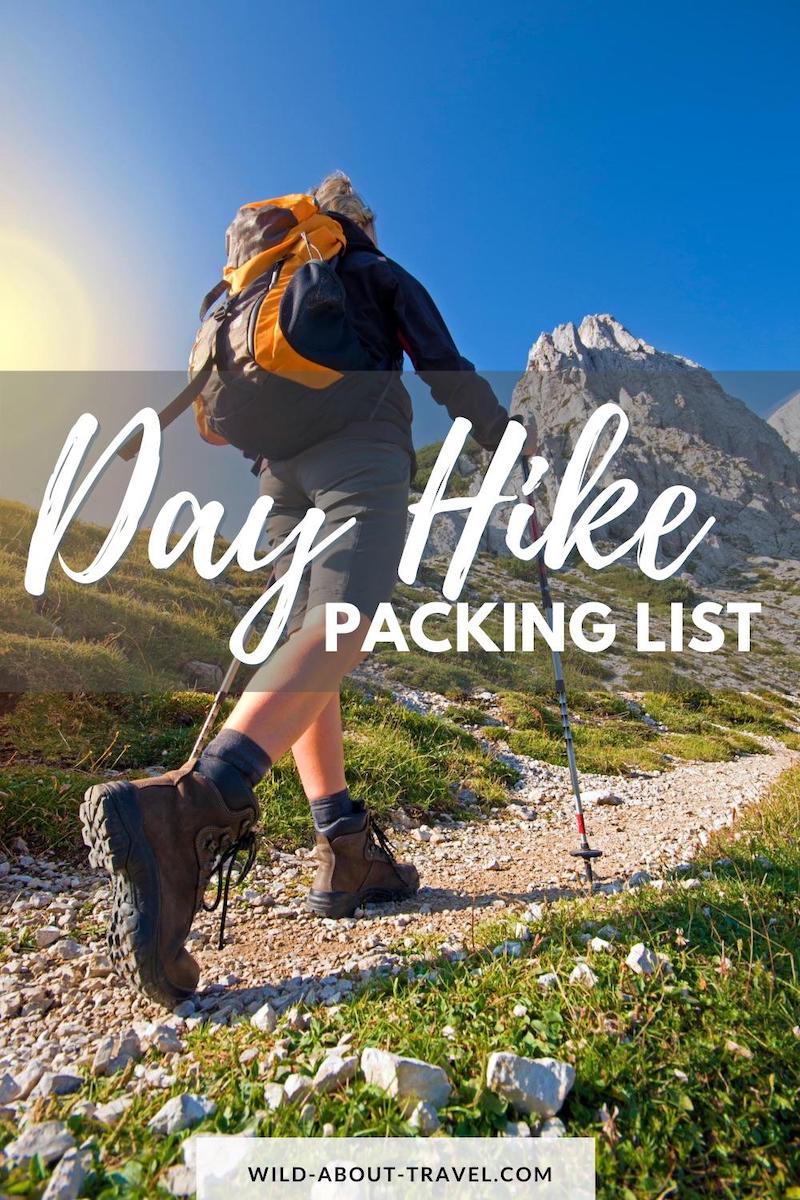
This post Day Hike Packing List: Must-Have Hiking Gear was first published at
Wild About Travel.
1 Day in Geneva: The Ultimate Travel Itinerary 23 Aug 2024 6:53 AM (5 months ago)
Known as the “Peace Capital,” Geneva blends rich history with beautiful settings. Nestled at the western tip of Lake Geneva and surrounded by the Alps and Jura mountains, it’s one of the prettiest cities in Switzerland. Find out how to spend 1 day in Geneva to make the most of your time in this charming city.
This post contains a few affiliate links to selected products and services. If you make a purchase, I receive a small commission at no extra cost to you.
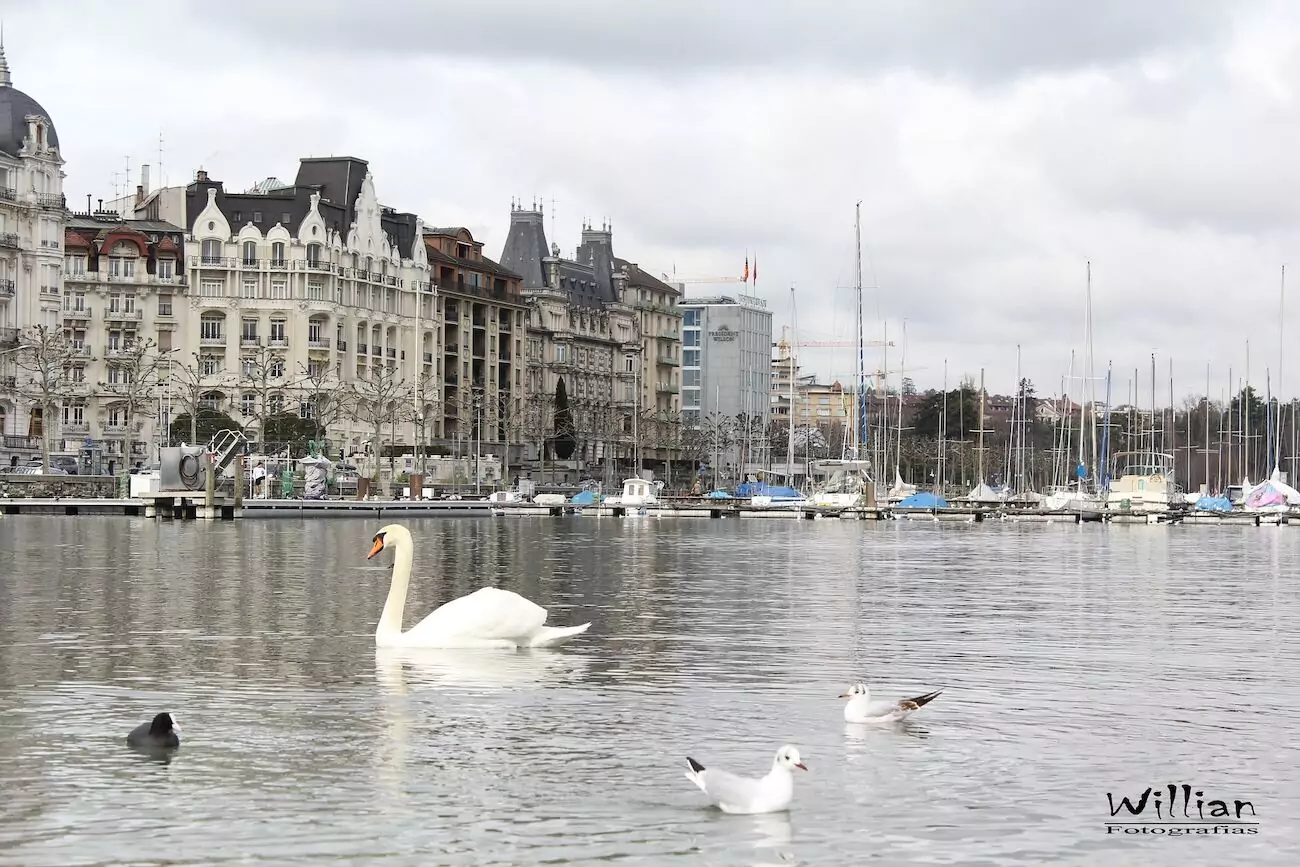
Unless you travel to Switzerland by car from another neighbouring country, your port of entry is likely to be Geneva or Zurich. Should you arrive in the Peace Capital, maybe heading for ski holidays in Switzerland, you might be tempted to go straight to the mountains. However, it’s worth spending at least one day in Geneva. Even longer, if you have time, because Geneva is also a perfect base for fantastic day trips on the lake and nearby towns. And also to France and the spectacular Mont-Blanc.
Is Geneva worth visiting?
Geneva is unlike any other Swiss city. Well, first of all you must know that compared to many other European cities like London, Paris, Madrid, Barcelona, Rome, and Milan, cities in Switzerland are comparatively much smaller. Zurich, the largest and my favourite, has a population of under 500,000, less than Edinburgh, Valencia, and Naples, to mention only a few. Even Bern, the Swiss capital, has little more than 120,000 inhabitants.
But let’s get back to Geneva, the second-largest city behind Zurich. This city has a unique international vibe because countless NGOs and luxury brands are headquartered in Geneva. While strolling around, you’ll meet people from all over the world, feel the cosmopolitan atmosphere, and breathe the air of opulence that shrouds one of the wealthiest cities in Europe.
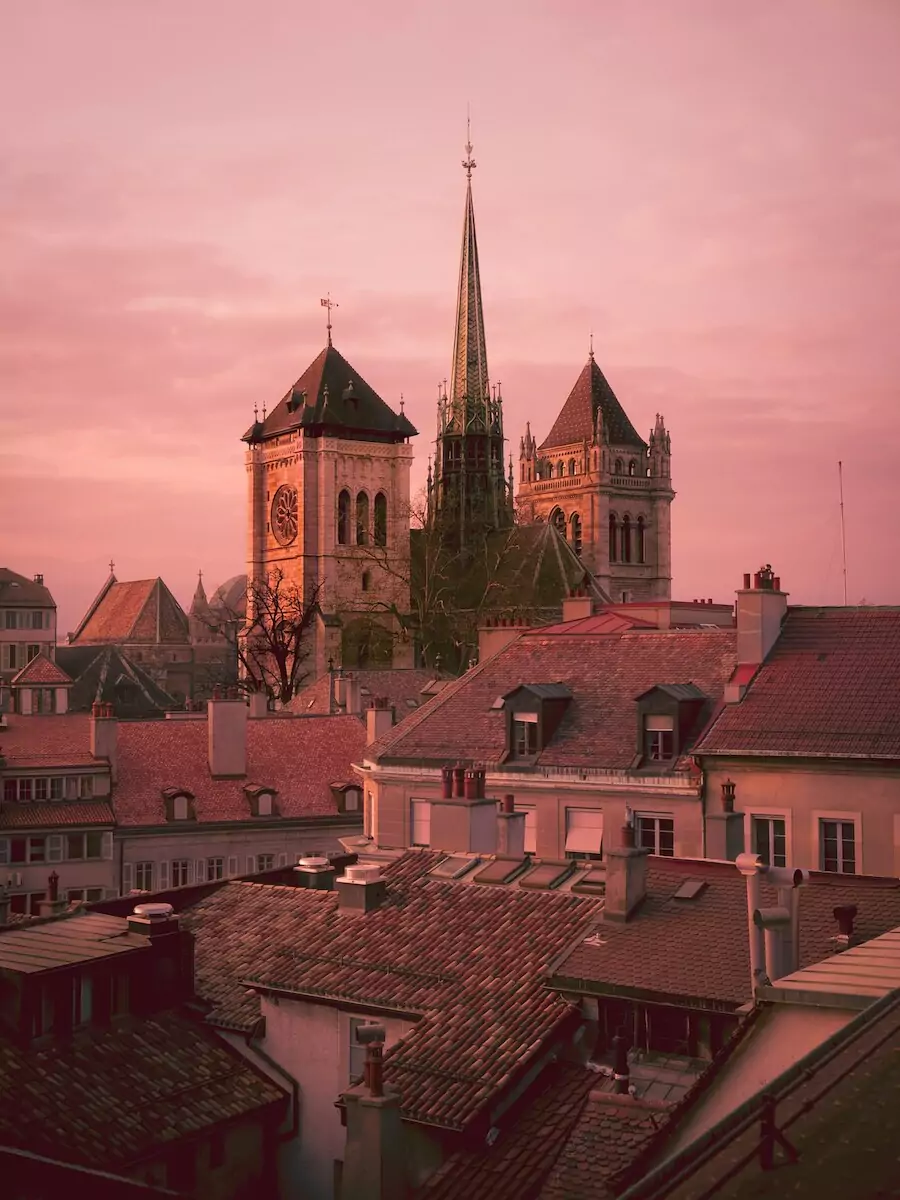
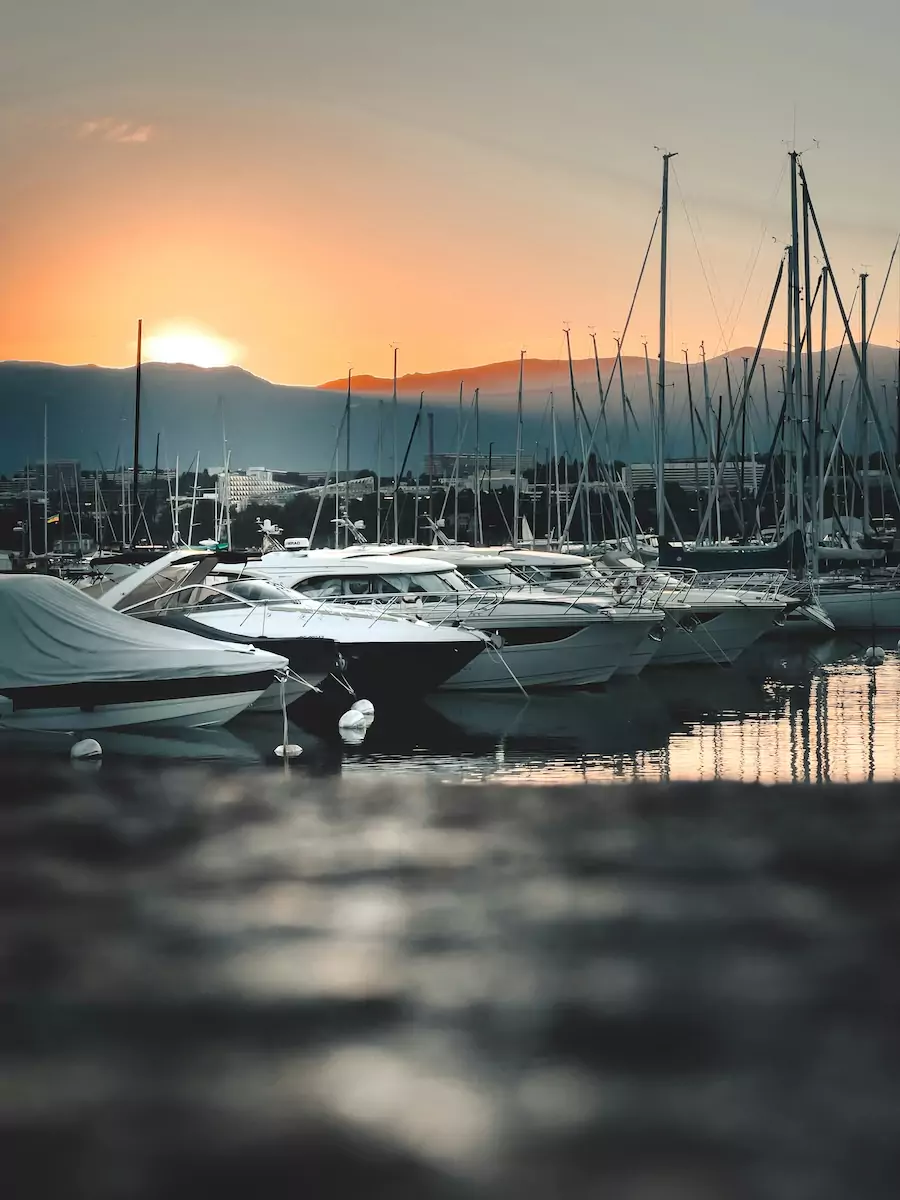
Geneva Old Town is charming and steeped in history. The lakeshore invites a stroll and a boat tour of the picturesque lake, weather permitting. Furthermore, the city is dotted with historical landmarks, museums, and galleries that reflect its rich cultural heritage.
Although the city is small, there are many attractions; therefore, 24 hours in Geneva will pass in a heartbeat! Furthermore, thanks to its geographical location, Geneva is ideal for unforgettable excursions to explore more of Switzerland and France’s natural beauty, including the iconic Lake Geneva and the breathtaking Alps in both countries. Last but not least, if you’re planning to go skiing in Switzerland and Geneva is your port of entry, don’t miss spending a day in the city!
Best Time to Visit Geneva
Geneva is a year-round destination. However, the best time to visit depends on what you’re looking for. Spring (April to June) and autumn (September to November) offer mild weather and possibly fewer tourists. Summer (July and August) is perfect for outdoor activities by the lake and enjoying the lovely lakeshore bars and restaurants. Winter (December to February) offers a magical view of snow-capped mountains and, in December, festive markets. Beware, though, that Geneva can get very cold, foggy, and windy in winter.
How Many Days in Geneva?
One day in Geneva is enough to see, if not all, at least most of the city’s main attractions. Of course, if you have time to stay 2 days in Geneva, or even 3, there’s plenty to do and see in the surroundings.
You can take plenty of day trips from Geneva on your own or with an organized tour. Options span from the majestic Mont-Blanc to picture-perfect Annecy. If you love chocolate (is there someone who doesn’t?), there’s a fantastic excursion allowing you to discover the countryside, the secrets of Swiss chocolate and gruyères cheese, and the delightful town of Gruyères.
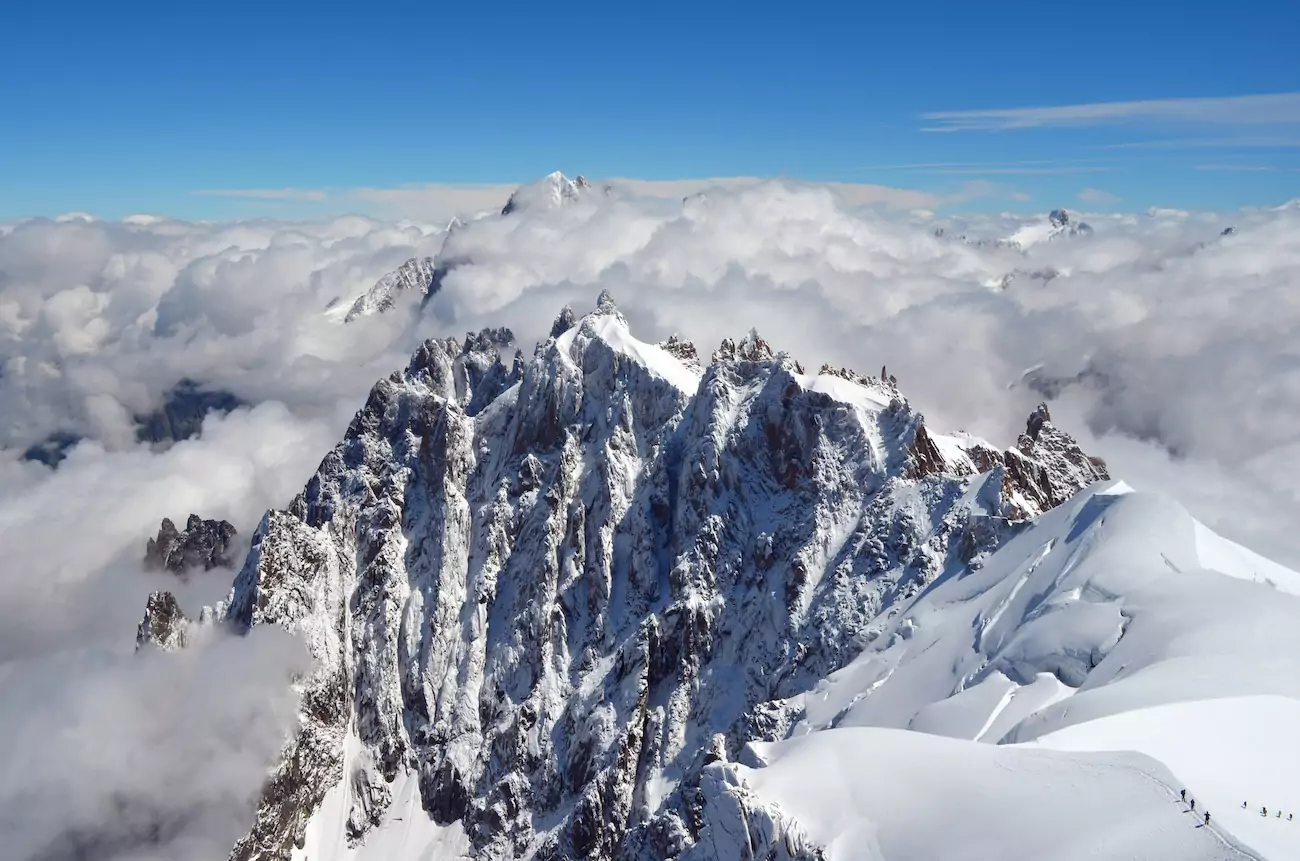
Last-Minute Trip to Geneva? Know Before You Go

Currency: Swiss Franc. Since Geneva is at the border with France, many places accept Euros. However, I suggest you change at least a small sum, especially if you’re heading to the countryside or traveling farther in Switzerland. Credit cards are widely accepted, except sometimes in mountain huts.
Getting there: You can fly to Geneva from many European airports and a few overseas destinations. If you haven’t booked your trip already, check the best options on Expedia.
Airports: Geneva Airport is only 4 km from the city, easily accessible by train and bus. The journey takes 7 minutes by train and about 20 minutes by bus. Check timetables and buy your train/bus tickets.
Getting around in Geneva: Geneva boasts an extensive network of buses, trams, and small yellow taxi boats. A single ticket, valid for 60 minutes, costs 3 CHF. Therefore, if you plan to use public transport more extensively, I suggest you buy a 1-day ticket, which costs 8 CHF if you start traveling at 9 a.m. (10 CHF if you’re an early bird).
Where to stay in Geneva: Geneva, like all of Switzerland, is expensive. Thus, the earlier you book your accommodation, the better your chances of finding an affordable solution.
- Rhodania Boutique Hôtel offers excellent value for money. Its rooms are simply but tastefully decorated, and the hotel is near Geneva’s main attractions.
- Featuring beautiful contemporary stylish decor, Eastwest Hôtel is close to the train station and Geneva’s prominent landmarks.
- Hôtel Les Armures is the perfect choice for a unique or romantic stay. It is beautifully decorated and located in Geneva Old Town.
Best Geneva guided tours: since one day in Geneva is a short time to explore the best of the city, you may want to take a guided tour. Here are a few of the best ones:
- The Private tour in electric tuktuk is a tailor-made 1-hour ride to discover Geneva’s most beautiful spots.
- Visit the best of Geneva with the city highlights private walking tour.
- If you’re looking for unusual things to do in Geneva, have a look at the chocolate flavors tour for a mouth-watering experience.
Geneva History in a Nutshell

Conquered by the Romans in 121 B.C., Genava – as it was called at the time – served as an important trading outpost due to its strategic location at the confluence of the Rhône River and Lake Geneva. Later, the city became Christian, and during the Middle Ages, it was part of the Holy Roman Empire.
One of the most defining periods in Geneva’s history was the Protestant Reformation. By the early 16th century, Geneva had become a refuge for Protestant reformers, most notably John Calvin, who arrived in the city in 1536. Under Calvin’s leadership, Geneva became a center of Protestant thought and theology, earning it the moniker “Protestant Rome.”
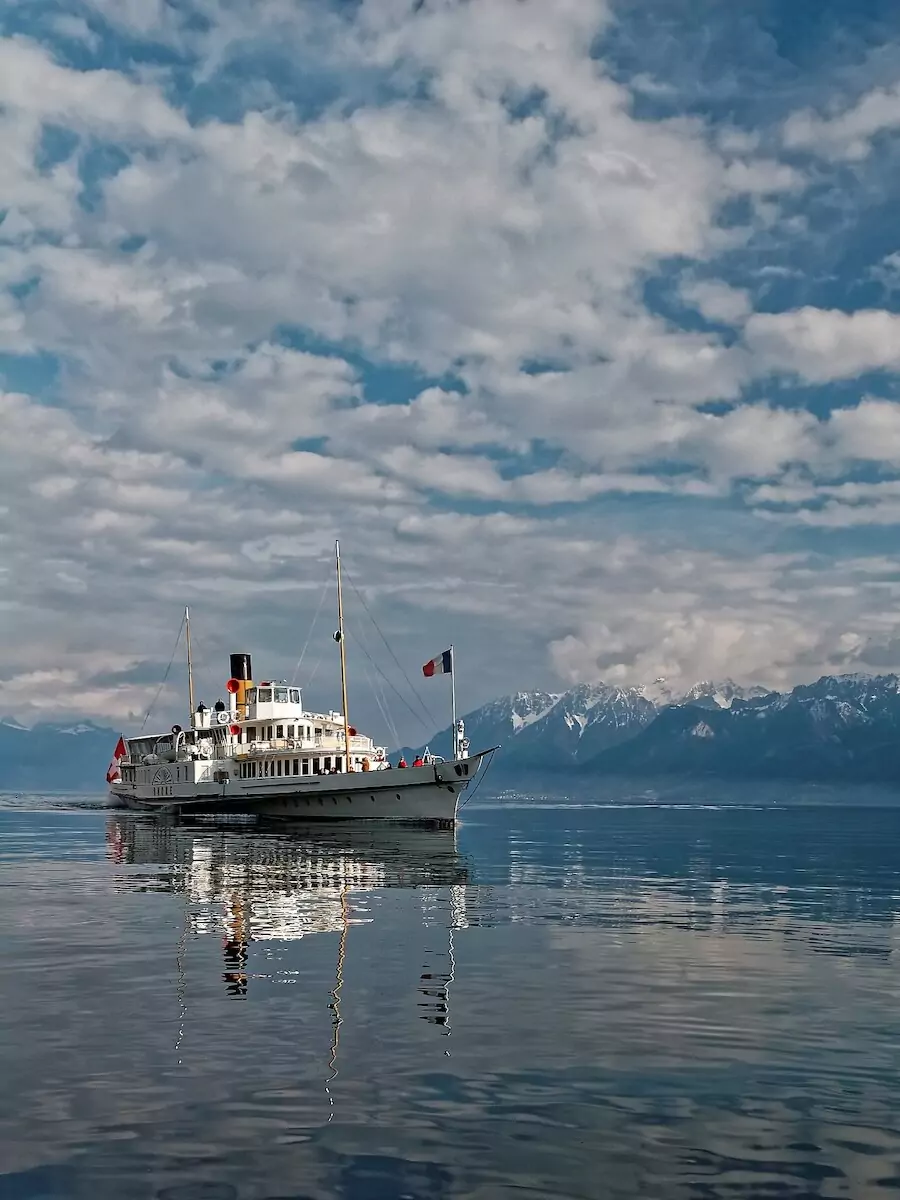
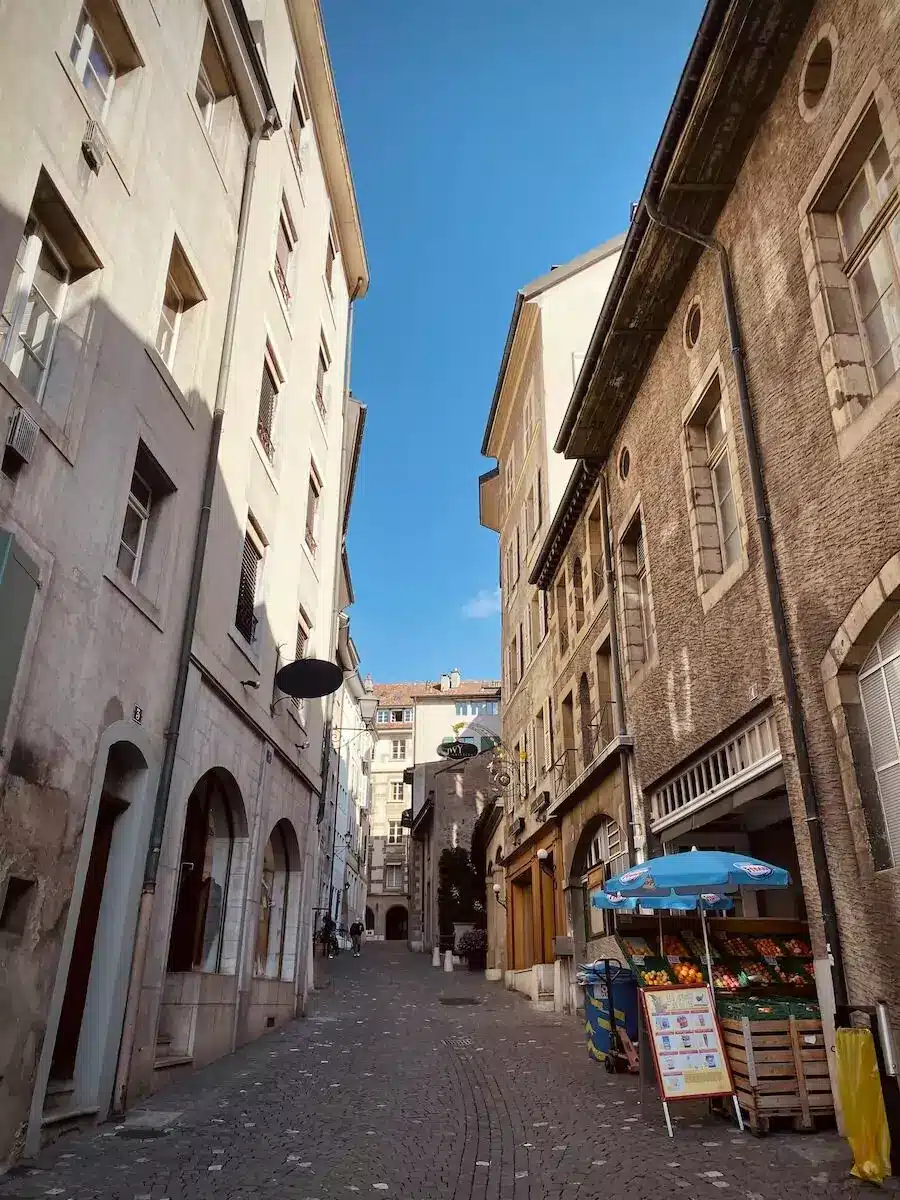
Calvin’s influence permeated every aspect of life in Geneva, from religious practices to education and governance. The establishment of the Geneva Academy in 1559 attracted students from across Europe, further cementing the city’s status as a beacon of reform and intellectual thought. The Reformation shaped Geneva’s religious identity and its political and social structures, leading to a republic governed by strict moral codes and a strong sense of civic duty.
In the 19th century, Geneva became a hub for international diplomacy. It first housed the headquarters of the International Committee of the Red Cross (ICRC) in 1863. Founded by Henri Dunant, a native of Geneva, the ICRC was established to provide humanitarian assistance during armed conflicts, a mission that continues today. The city’s commitment to peace and diplomacy was further solidified after World War I when it became the seat of the League of Nations in 1920. Although the League ultimately failed to prevent another global conflict, Geneva’s reputation as a city of diplomacy endured.
Today, Geneva hosts a myriad of international Non-Governative Organizations, including the United Nations Office at Geneva (UNOG), the World Health Organization (WHO), and the World Trade Organization (WTO). This concentration of global institutions has earned Geneva the “Capital of Peace” title, reflecting its ongoing dedication to fostering international cooperation and dialogue.
1 Day in Geneva: How to Experience the Best of This Charming City

Although the city is relatively small, there are many activities to do in Geneva. Thus, 1 day in Geneva will be over quicker than expected. Of course, as in every destination, it’ll be up to you to decide which of Geneva’s attractions to focus on. But let me help you highlight some of the best things to do in Geneva. Then, you’ll choose which ones to include in your Geneva 1-day itinerary.
Best Things to Do in Geneva, Switzerland: Map
Discover Geneva Old Town
Nestled on a natural hill, Geneva’s Old Town is a hidden gem. So, if you can only spend a day in Geneva, the historical center is a must-see.
At the heart of the Vieille Ville lies Place Bourg-de-Four, a vibrant square adorned with a fountain, fresco-adorned cafes, and elegant 18th-century facades. Surrounding it is a labyrinth of narrow streets and charming squares, inviting you to wander through cozy restaurants and delightful antique shops. On Rue du Puits-Saint-Pierre, be sure to visit Maison Tavel. Built in the Middle Ages, it’s Geneva’s oldest house, now home to the Museum of the History of Geneva.
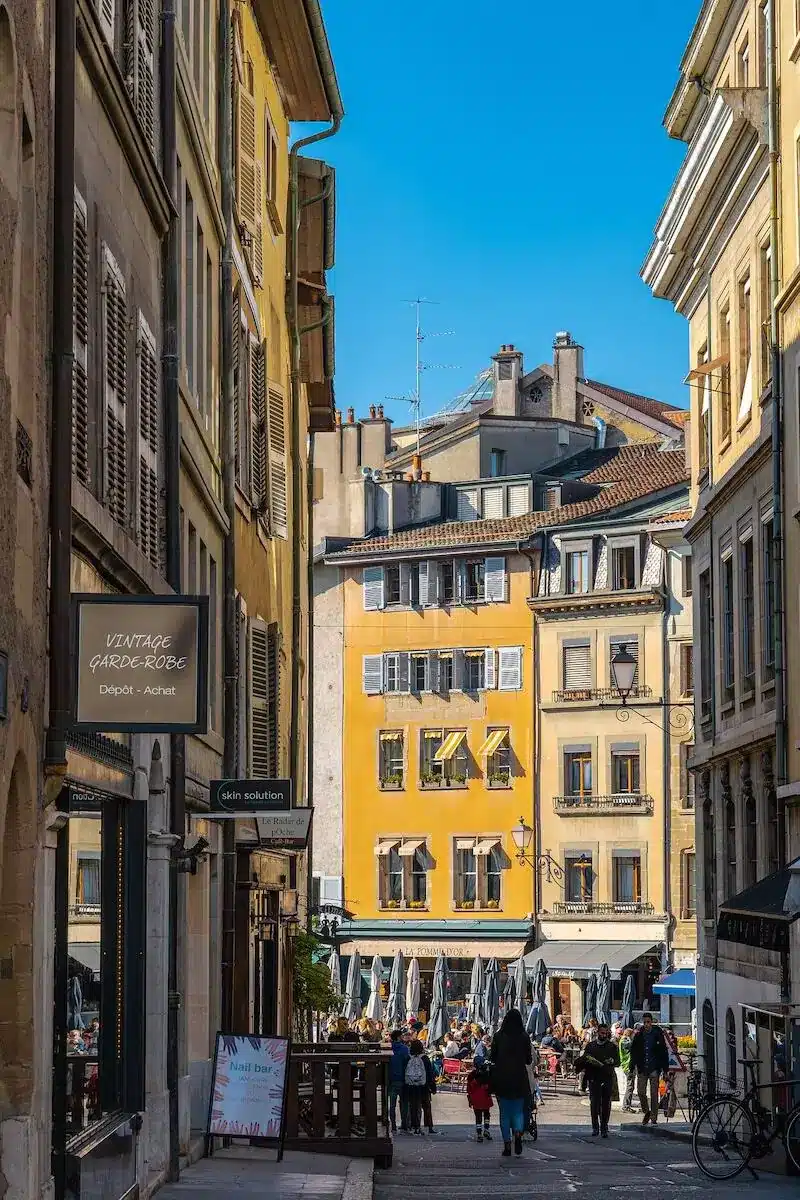
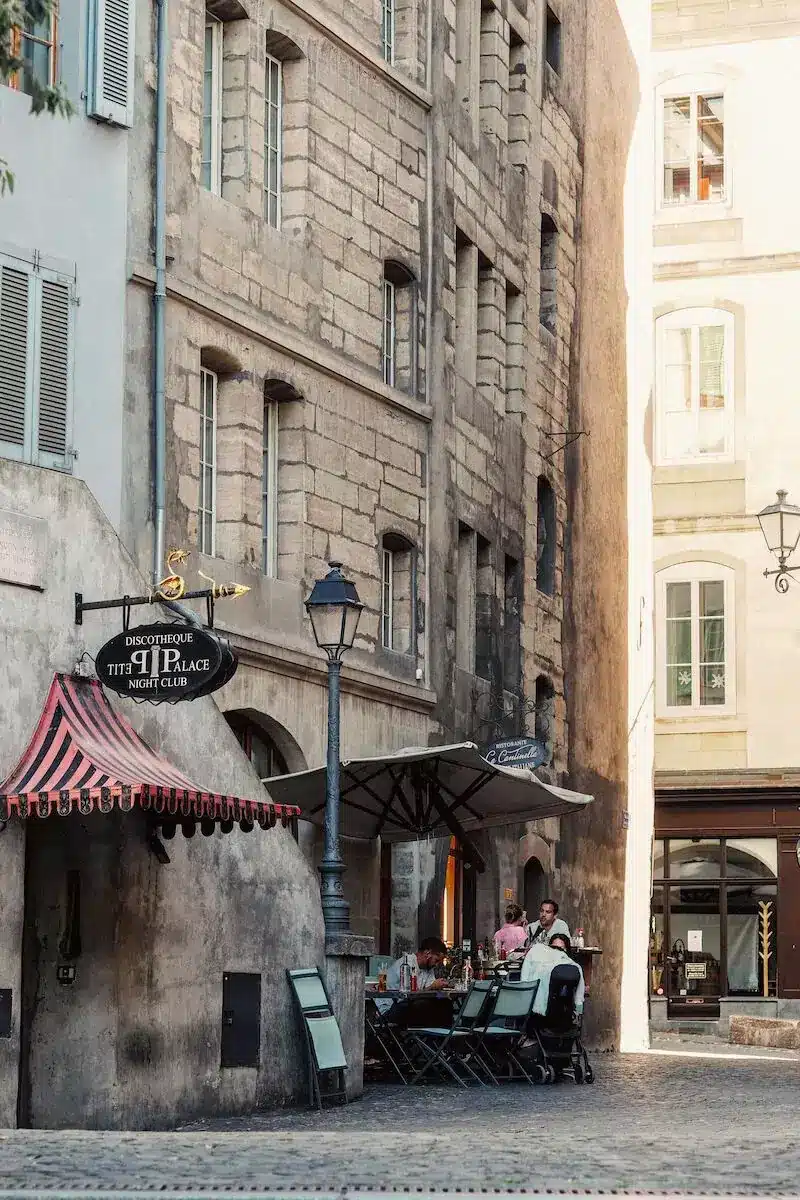
St. Peter’s Cathedral
Located at the highest point in the old city, St. Peter’s Cathedral majestically overlooks Geneva. This imposing structure, both austere and grand, has undergone multiple renovations. As a result, the current building is a blend of Gothic and Neoclassical architectural styles. The cathedral played a crucial role in Geneva’s history. From here, in the 16th century, John Calvin advanced the Protestant Reformation.

After exploring the interior, be sure to ascend the northern and southern towers for stunning views of Lake Geneva and the surrounding mountains.
Geneva Jet d’Eau
The Jet d’Eau is one of Geneva’s most iconic landmarks, visible from nearly every corner of the city. Shooting 140 meters into the air at 200 km per hour, it’s one of the tallest fountains in the world. If you’re watching from the pier, expect a refreshing spray.
However, the Jet d’Eau is more than just a stunning fountain. It was originally created in 1886 as a safety valve to relieve pressure from a nearby hydroelectric plant. By the late 19th century, the people of Geneva relocated the fountain to its current spot, appreciating its aesthetic significance.
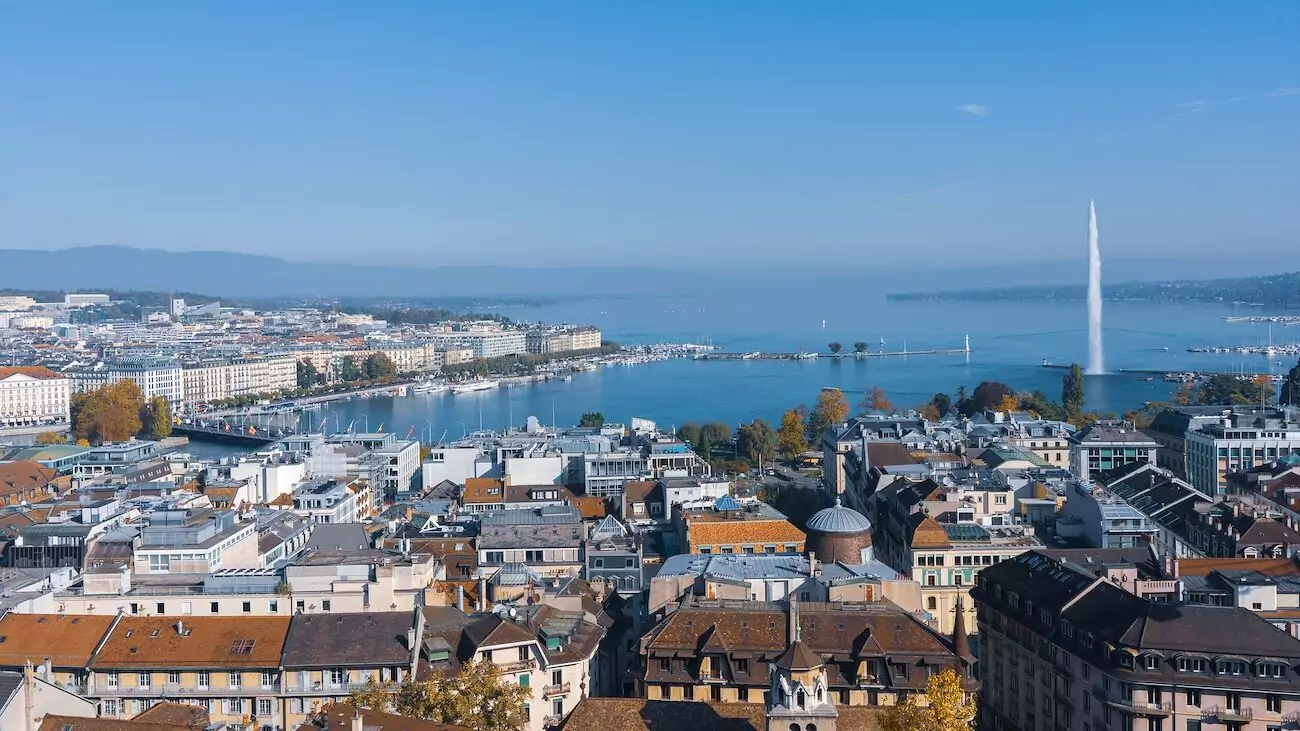
If you’re fortunate, you might catch the Jet d’Eau illuminated in vibrant colors at night, an event that happens a few times a year to celebrate special humanitarian occasions.
Parc des Bastions and the Reformation Wall
At the foot of the Old City and close to the University, Parc des Bastions is a popular spot for relaxing, enjoying a picnic, or engaging in one of the six giant chess games.
One of Geneva’s main attractions is the Reformation Wall, which is located within the park. This significant landmark was created in 1909 to commemorate the 400th anniversary of John Calvin’s birth. Stretching 100 meters long, the wall features towering statues of four key figures in the Calvinist Reformation: William Farel, John Calvin, Theodore Beza, and John Knox. Behind these statues, the Protestant Reformation and Geneva motto is inscribed: Post Tenebras Lux (After Darkness, Light).

The Geneva City Pass is a great option if you plan to visit many landmarks and museums. The 24 hours pass costs 35 CHF, including public transportation. The City Pass is even more convenient if you spend 2 days in Geneva: 50 CHF, public tranport included. The Geneva City Pass includes 60 discounted or free activities. Free things to do in Geneva with the Pass include, among others, the Patek Philippe and International Red Cross Museums, the Mont-Salève cable car, access to the Towers of St. Pauls Cathedral, and free entry at Geneva beach.
Geneva Lakeshore
Switzerland is famous for its mountains, but the country also boasts many beautiful lakes and Lake Geneva is one of them. Take a leisurely walk along the Quai du Mont Blanc, a picturesque promenade that stretches along the lakeshore, leading you to the Bains des Pâquis. The artificial jetty at Bains des Pâquis is a popular gathering place for locals, especially during the summer, when people sunbathe and enjoy a refreshing swim. You can join them or sit at the Buvette, a cozy lakeside café, where you can savor a drink and a bite to eat while soaking in the stunning views of the lake and the surrounding mountains.
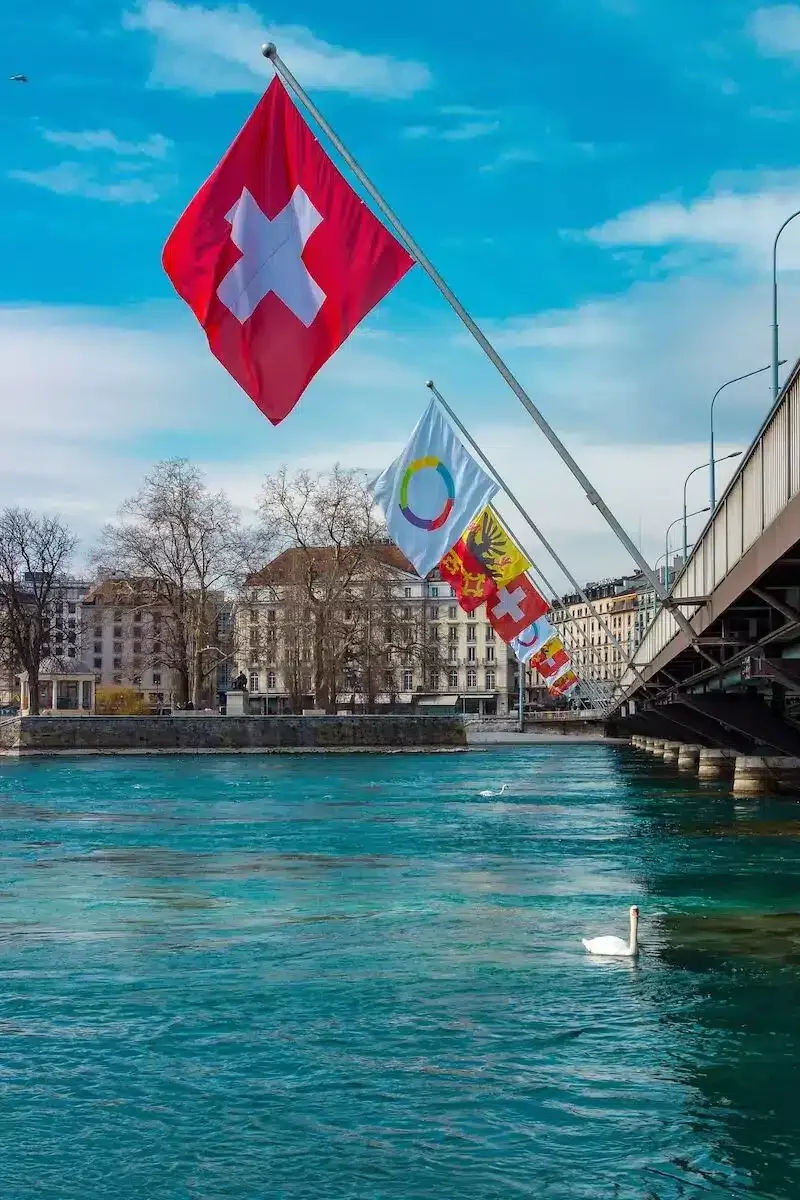
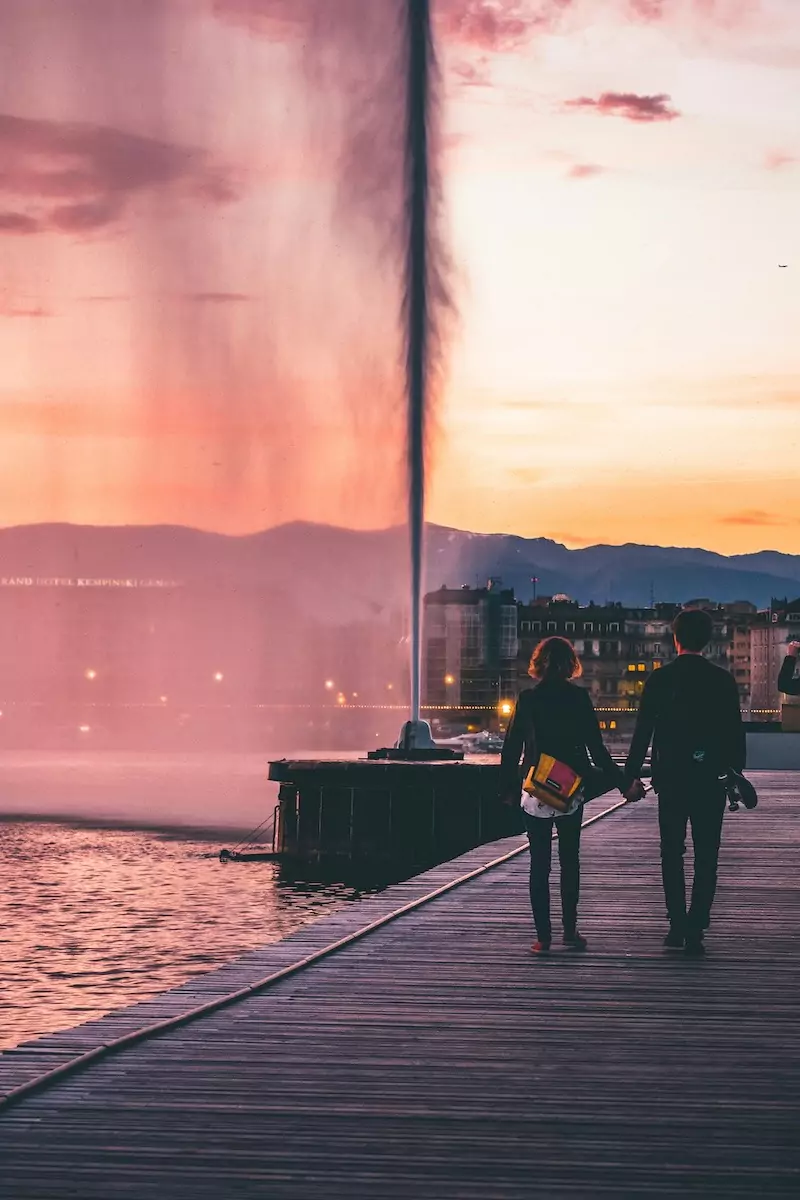
If the weather turns rainy, don’t worry—Bains des Pâquis has you covered. Head to the saunas or hammam, or indulge in a traditional Turkish bath. These facilities provide a perfect way to relax and rejuvenate, no matter the weather.
Patek Philippe Museum
Clocks are an iconic symbol of Switzerland, with the fame of Swiss watches tracing its roots back to Geneva. In the late 1500s, when John Calvin preached the Protestant Reformation, he dramatically altered the city’s cultural landscape. Calvin stripped the Cathedral of its ornate decorations and prohibited the display of jewelry. As a result, goldsmiths turned their skills towards crafting more modest and functional items, such as pocket watches, which eventually evolved into the renowned wristwatches we know today.
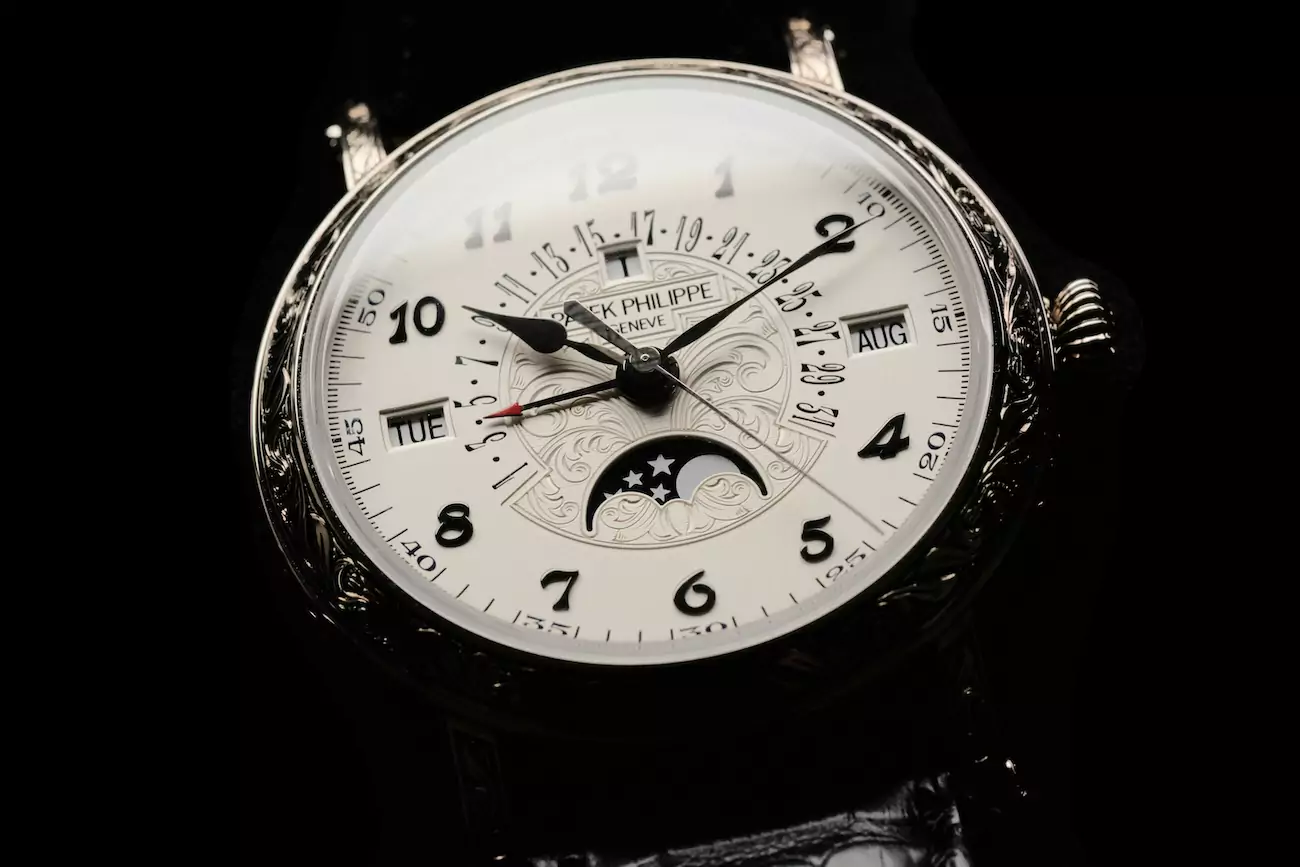
For those interested in the intricate artistry of timepieces, there’s no better place to visit than the Patek Philippe Museum in Geneva. This museum is a treasure trove for watch enthusiasts, featuring two main exhibitions. The Antiques Collection spans 500 years of watchmaking history, showcasing pieces from the 1500s to the 1900s. Meanwhile, the Patek Philippe Collection highlights the exquisite timepieces produced by the company since its founding in 1839. The Patek Philippe Museum stands out as one of the best activities in Geneva when it rains. There, you’ll enjoy a fascinating journey through the evolution of watchmaking.
Geneva Red Cross Museum
Geneva is a city like no other. It’s home to some of the world’s most significant NGOs and international organizations, and for good reason. The Geneva Convention was born here. The treaty, signed in 1864, resulted from the vision and dedication of Swiss businessman Henry Dunant. The Geneva Convention was groundbreaking in its aim to protect the rights of the wounded during war, ensuring they received care without discrimination based on race, origin, religion, or political beliefs. This landmark treaty followed the creation of the International Committee of the Red Cross one year earlier, in 1863.
The International Red Cross and Red Crescent Museum in Geneva offers visitors a deep dive into the history and impact of this organization. The museum’s permanent exhibition, “The Humanitarian Adventure,” takes visitors on a journey through the challenges of humanitarian efforts worldwide.
Lake Geneva
I love experiencing cities from different perspectives. That’s why whenever I visit a town by a lake, sea, or river, I make it a point to take a boat tour. The breathtaking views from the water are simply unmatched. I enjoyed boat tours in Porto, Zurich, and Lucerne, to mention only a few European cities. And I took the boat and navigated Lake Geneva many times.
You can enjoy a peaceful 50-minute boat ride around the lake. Alternatively, the grand cruise on Lake Geneva lasts two hours and allows you to see more of the lake and its beautiful mountain scenery. For a magical experience, you can also opt for an evening boat tour, when the city lights reflect off the water and create a mesmerizing atmosphere.
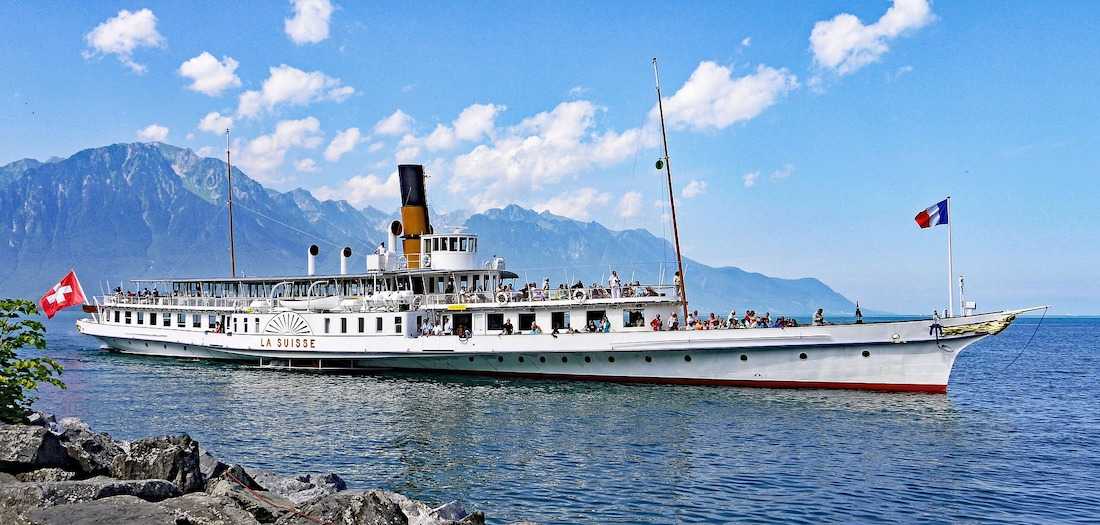
Jardin Anglais and the Flower Clock
The Jardin Anglais (“English Garden”) is a beautiful spot with plenty of shaded areas, making it a favorite among tourists and locals. As you explore the lovely gardens, you’ll come across the famous Flowered Clock (“Horloge Fleurie”). On par with the iconic Jet d’Eau, it’s one of the city’s symbols and one of the most photographed spots in Geneva.
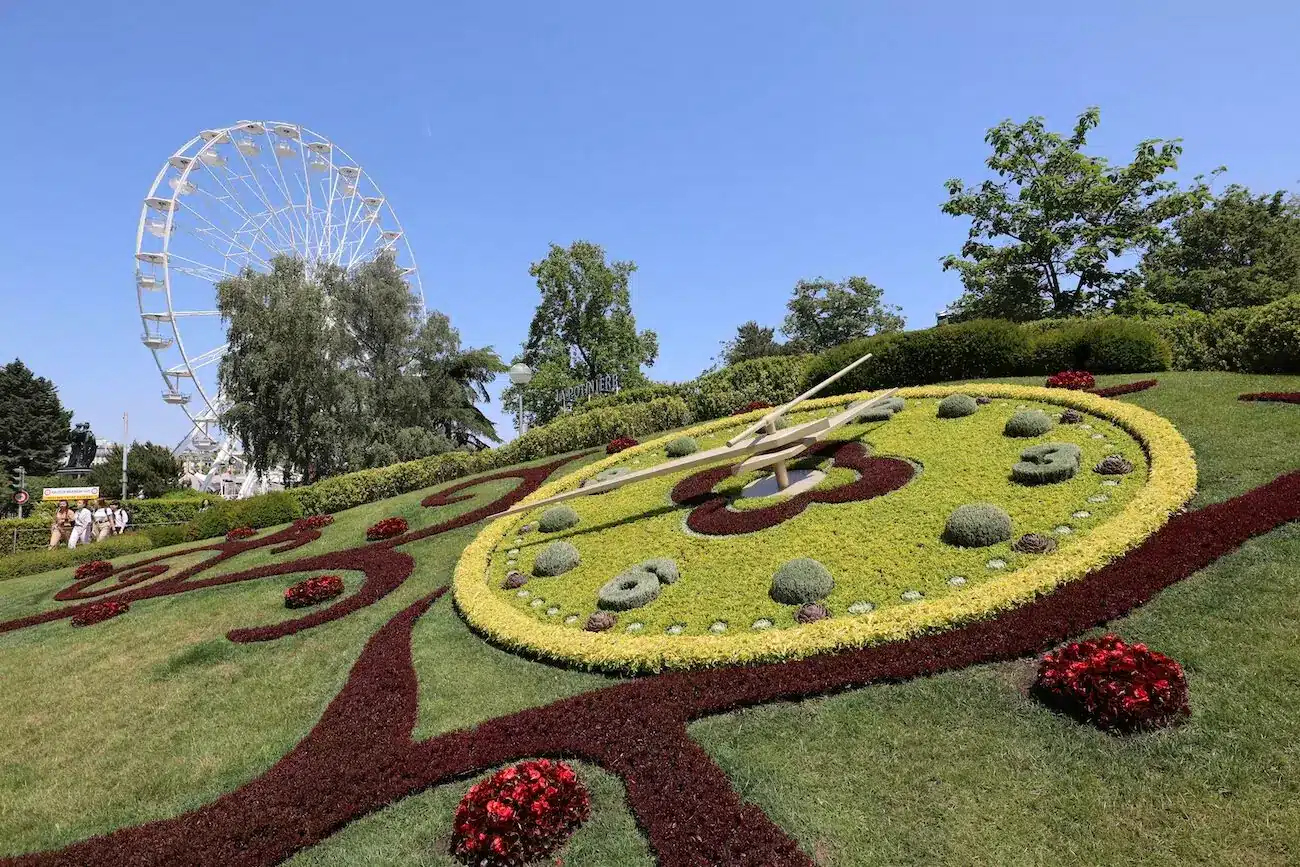
This stunning Flowered Clock is made from 6,500 vibrant flowers, which are changed several times throughout the season to reflect the evolving colors of the year. Be prepared to join a crowd of tourists snapping selfies at this iconic Swiss landmark, a testament to Geneva’s unique blend of nature and artistry.
Wrapping things up… A day in Geneva may seem short, but with careful planning, you can experience the essence of this beautiful city. From its historical landmarks and cultural heritage to its stunning natural beauty and vibrant neighborhoods, Geneva promises a memorable visit.
Don’t forget…
Remember to pack a travel adapter to recharge all your electronic devices.
Also, although travel insurance is not required for people visiting Europe, I strongly recommend buying appropriate coverage. It’s good to have peace of mind and support in case of travel disruptions or health issues. I never traveled abroad without it, and I needed it more than once.

Pin for later!


This post 1 Day in Geneva: The Ultimate Travel Itinerary was first published at
Wild About Travel.



